Burgundy With A Southern Accent: Four Producers Elevate Underestimated Côte Chalonnaise’s Givry to New Qualitative Heights
Join us for Saturday Sips
It is a pleasure to announce that we intend to make ‘Saturday Sips’ a permanent fixture of our Saturdays for the foreseeable future. Come at any time during our regular business hours and sample a few of the wines that we feature in our weekly newsletter. Along with the sips, our staff, along with myself, will be on hand to discuss the nuances of terroirs and the appellations that produced the wines we will taste.
Burgundy attracts as many investors as it does wine lovers; it’s no secret that the hallowed hills of eastern France produce some of the most sophisticated, terroir-influenced wines in the world—a product known for longevity, sensual appeal, and as a somewhat unpleasant side-effect, astronomical prices.
But by sheer volume, Burgundy is far less about shelf-dressers like Domaine Leroy’s Musigny and DRC’s Romanée-Conti Grand Crus, and more about the rustic wines of the countryside. These wines represent superb value in both Pinot Noir and Chardonnay, especially in villages like Mercurey, Montagny, Rully and Givry.
Givry is among these lesser-known names that we’ll be exploring this week; sensational examples of an appellation that produces extremely good wines that often fly beneath Sotheby’s radar, although they would be still be excellent wines at any price point.
Heading South to Côte Chalonnaise: Another Side of Burgundy
The legend of Snow White and Rose Red may have originated with the Brothers Grimm in Germany, but a modern reenactment can be found in the vineyards of Côte Chalonnaise. In this tale, the star performers are Pinot Noir as Rose Red and as Snow White, Chardonnay. Aligoté is an understudy, except in Bouzeron—the only appellation Village that is entirely produced from this ancient variety.
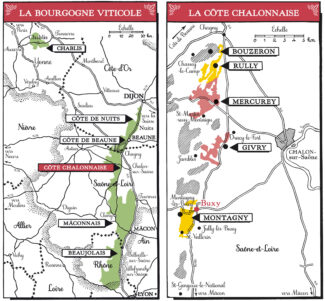
Sandwiched between the Côte de Beaune and the rolling hills of the Mâconnais, the Côte Chalonnaise is 16 miles long by four miles wide; the finest vines are planted on southeast slopes and produce red, rosé and white wines from 44 communes within cantons of Buxy, Chagny, Givry and Mont-Saint-Vincent. Like Beaune to the north, the soils of northern Côte Chalonnaise are limestone-dominated with outcrops of lias and trias formations. In the south, the limestone is marly, with sand and flint clays at the foot of the slopes. When graced with long, dry summers, Pinot Noir ripens beautifully, producing wines that (like Rose Red) are sassy, lively and cheerful while Chardonnay, sending roots deep into Burgundy’s clay, is more like Snow White: a homebody, redolent of gentle flowers with a suggestion of warm bread and honey. But in fairness to literary and vinicultural history, Côte Chalonnaise was already staging these heroines half a millennia before the Brothers Grimm penned their first ‘Once upon a time.’
Givry: Burgundy’s New Promised Land
Located near the center of the Côte Chalonnaise, ‘Givry’ as an appellation covers not only Givry itself, but also the communes of Dracy-le-Fort and Jambles. The best vineyards sit on the south-facing, limestone-rich slopes immediately west of Givry itself. It is small, but top-heavy with Premier Cru vineyards, with 30 properties thus designated.
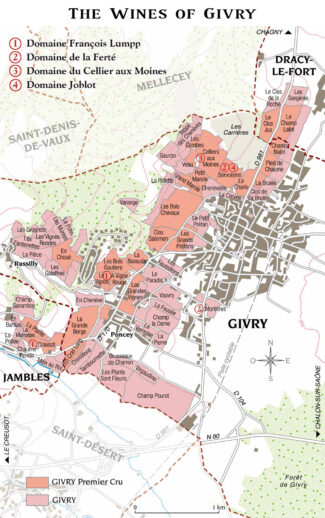
80% of these top sites are planted to Pinot Noir; only 24 acres grow Premier Cru white. Most of the Premier Cru vineyards boast terroirs based in brown soils derived from the breakdown of Oxfordian Jurassic limestone and clay where vines are planted facing east-south-east or due south at altitudes between 800 and 900 feet. As a result, the red wines of Givry tend to be fresh and expressive, showing strawberry and raspberry jam, fresh berries and delicate wisps of spice framed by supple tannins and refreshing acidity.
Critics have referred to these marvelous little villages in southern Burgundy as a ‘promised land.’ Our promise is that each of these wines over-produce for their price point.
2015 – Broad-Beamed with Aging Potential
The 2015 vintage was an extraordinary one throughout the Côte d’Or and Côte Chalonnaise. The red wines are truly great: rich, powerful and statuesque but almost always underpinned by juicy acidity. The distinctive characters of the region’s diverse terroirs, which can be occluded by over-ripeness in warm years, are articulately expressed. Nor, despite its richness and amplitude, is this a facile vintage. These are wines built for the long haul, with serious reserves of ripe tannins hidden behind their generous fruit: they deserve patience, and—if they briefly shut down in bottle—they demand it.
Although some vignerons have drawn comparisons between Vintage 2015 and the excellent Vintage 2005, yields were lower in 2015 and the wines are more concentrated. Others look to 1990 for an analogy. Perhaps the last word should go to Volnay’s Michel Lafarge, one of the Côte d’Or’s most thoughtful and experienced observers, who draws parallels with 1929s which he tasted as a young man in his family’s cellars, “No other vintage in the past 60 years is really comparable.”
2015 began as an ideal growing season, then excessive July heat began to pose some problems, which were eased by intermittent rains in August. Results were excellent overall with lush, ripe, broad-beamed wines produced in most Premier Cru sites.
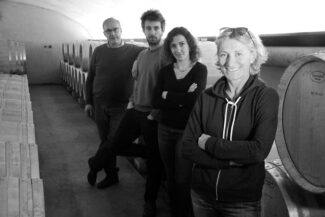
François, Son Pierre, Daughter Anne-Cécile, and Isabelle Lumpp, Domaine François Lumpp
Lumpp and his brother inherited their family property in 1977; in 1991 François founded his own label with his wife Isabelle and planted cuttings of older, selected bud wood (Sélection Massale) in Givry’s best Premier Cru sites, situated on the mid to upper level slopes of the hills. At harvest, pickers sort the grapes carefully at each vine, and then they are checked again on the sorting table. François aims to pick at optimum ripeness, favoring the bright acidic profiles of wines which have developed on the vine rather than masked by their time in barrel.
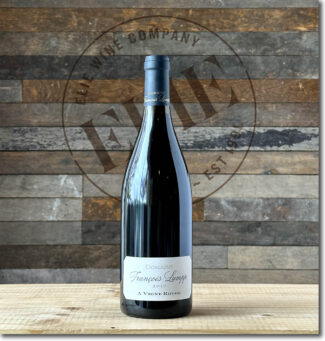 Domaine François Lumpp, 2015 Givry Premier Cru A Vigne Rouge ($63)
Domaine François Lumpp, 2015 Givry Premier Cru A Vigne Rouge ($63)
A full-bore representation of Lumpp’s finesse, a wine from his 6-acre Premier Cru site ‘A Vigne Rouge’ that manages to be both notably ripe yet elegantly cool with an airy combination of earth, red currant and discreet spice nuances. A beautifully refined mouth leading to a lingering and complex finale.
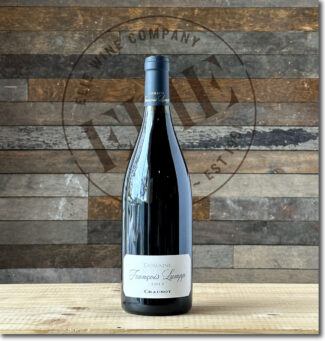 Domaine François Lumpp, 2015 Givry Premier Cru Crausot ($72)
Domaine François Lumpp, 2015 Givry Premier Cru Crausot ($72)
Perhaps Givry’s best terroir for Chardonnay and one of François Lumpp’s highest-elevation parcels, the Climat ‘Crausot’, with a 2.5-acre holding, also produces elegant, ample Pinot Noir with juicy red berry up front, licorice and pie spice in the background.
2020 – Dramatic, Concentrated with Surprising Levels of Freshness
François Labet, a négociant whose family has lived in Beaune for 300 years, summarizes the 2020 vintage like this: “An intellectually-challenging vintage; the reds in particular defy easy categorization because the impact of that season varied considerably by terroir. Producers had key decisions to make, especially when to pick and that significantly affected both the style and quality of the resulting wines.
And this is because the most notable feature of this vintage was its early and rapid harvest: Many domains began picking the week of August 17th and while August harvests have been frequent in the 21st century (there were none in the prior century), this was for many domains the first time they had not only started, but completed a harvest before the end of August.
The resulting wines (particularly from earlier harvests where sugars were high and acids intact) are remarkable, both for whites and reds. The season was hot and dry, but water tables were healthy from the mild and wet preceding winter.
Beaune and Côte Chalonnaise were particularly fortunate and Chef de Cave Frédéric Weber (Bouchard Père et Fils) describes 2020 as a concentrated and strong vintage: “It reminds me of 2016 for its vibrancy and energy; the wines are voluptuous and structured. A great vintage for the future, like the ‘18s.”
Domaine de la Ferté
Domaine de la Ferté is one of five estates owned by the Devillard family (which also includes Château de Chamirey and Domaine des Perdrix); Ferté covers a relatively small area of six acres spread over three plots, two in the village appellation of Clos Mortière and one in Servoisine Premier Cru. It thrives under the direction of oenologist and ‘chef de culture’ Enrico Peyron.
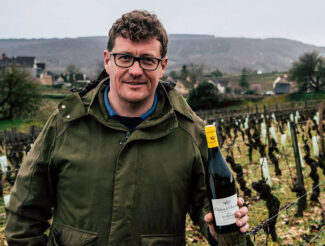
Enrico Peyron, Winemaker at Domaine de la Ferté
Peyron says, “We are privileged to grow in some of most renowned Premier Crus of the appellation; we plant with 4000 vines per acre, a high-density that is Burgundian tradition that ensures high quality wine. The grapes are harvested with great care and experience and limited use of treatment products, while the average age of our vines is 35 years.”
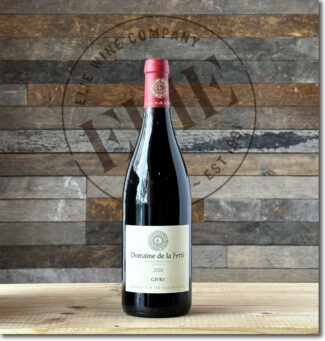 Domaine de la Ferté, 2020 Givry ($43)
Domaine de la Ferté, 2020 Givry ($43)
A Village-level wine from Pinot Noir vines planted in 1985; the vineyard is surrounded by two Premier Crus and features south-east exposures in deep clay soils. The wine is aged 9 months in 228-liter Burgundian barrels of which 20% are new and shows fresh notes of wild strawberries and supple pie cherries behind a bit of cola and mineral crispness.
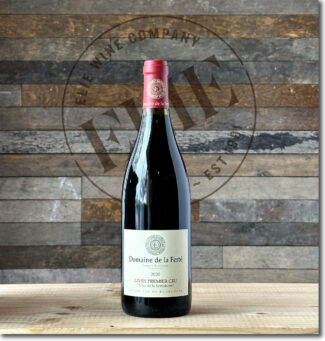 Domaine de la Ferté, 2020 Givry Premier Cru Clos de la Servoisine ($49)
Domaine de la Ferté, 2020 Givry Premier Cru Clos de la Servoisine ($49)
Servoisine is a south-facing Climat planted sixty years ago; the wine displays luscious notes of sweet cherries, cassis, licorice and loamy soil. This is a marvelous, full-bodied and concentrated wine with powdery tannins and lively acidity.
Domaine du Cellier aux Moines
Overlooking one of Givry’s historic Premier Crus, the Cellier aux Moines was magnificently restored by Catherine and Philippe Pascal and their three children. Pascal is the former CEO of Veuve Clicquot and the Moët Hennessey Group, and after retiring from the company, he began a search throughout Burgundy for a restoration project, ultimately settling on an overgrown vineyard slopes of Givry’s ancient monastery, La Ferté Abbey, which had produced wine in the region going back nine centuries.
“The vineyards and the monastic cellar were in terribly bad shape,” says Pascal, “but we realized that this ancient estate presented a unique opportunity to rediscover a star appellation for Pinot Noir. Despite Givry’s reputation as a bit player in the Burgundy wine scene, I must insist that the area has been unfairly underrated.”
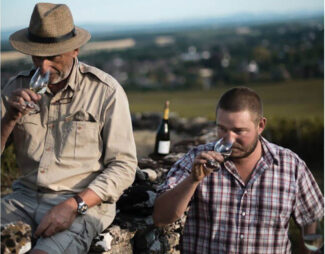
Philippe Pascal and Viticulturist / Winemaker Guillaume Marko, Domaine du Cellier aux Moines
In 2015, Guillaume Marko joined the Domaine as head of vineyards and winemaking operations. Holding a DNO (Diplôme National d’Œnologie) from Dijon University, Guillaume trained during few years in famous wine estates of Côte de Nuits, including Domaine de la Romanée-Conti. Marko maintains: “The challenges have been many—reclaiming the steep, bush-covered hillsides, mapping soils, converting to biodynamic winemaking and constructing an entirely new gravity-fed winery—but the results have been remarkable: In my opinion, and that of many critics, Domaine du Cellier aux Moines now produces some of the most coveted wines in Givry.”
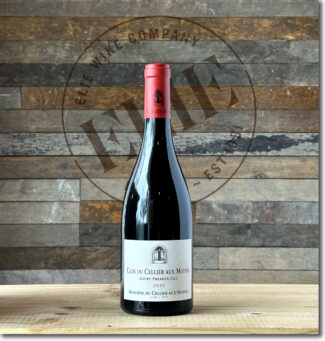 Domaine du Cellier aux Moines, 2020 Givry Premier Cru Clos du Cellier ($87)
Domaine du Cellier aux Moines, 2020 Givry Premier Cru Clos du Cellier ($87)
One of Givry’s historic Premier Crus, Clos du Cellier is twelve acres replanted with superior selections of Pinot Noir. The intensity of the wine’s garnet color is matched by the complexity of the aromas, evoking violets, tart cherry conserve and damp forest floor. There is vibrant tension between texture and acidity and a long aftertaste with dusty tannins and notes candied Morello cherry.
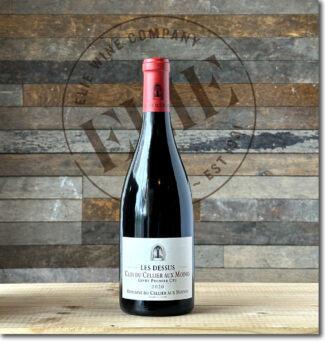 Domaine du Cellier aux Moines, 2020 Givry Premier Cru Clos du Cellier ‘Les Dessus’ ($176)
Domaine du Cellier aux Moines, 2020 Givry Premier Cru Clos du Cellier ‘Les Dessus’ ($176)
From the upper slopes of the vineyard, where the soils are characterized by harder, less decomposed limestone, this wine saw a full 23 months of élevage before bottling. Mingling scents of red berries and plums with notions of peony, rose and bergamot introduce a medium to full-bodied wine with a bright core of fruit and a beautifully perfumed finish.
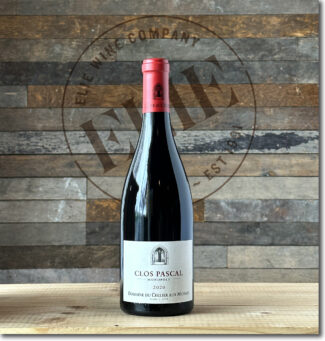 Domaine du Cellier aux Moines, 2020 Givry Clos Pascal ‘Monopole’ Rouge ($288)
Domaine du Cellier aux Moines, 2020 Givry Clos Pascal ‘Monopole’ Rouge ($288)
Just above the Clos du Cellier is another tiny plot (two-thirds of an acre) surrounded by thick walls which had been left fallow since the phylloxera crisis. Replanted in 2010, it was named ‘Clos Pascal.’ The wine shows nicely lifted raspberry tones with ripe cherry beneath, along with a touch of sandalwood and refined tannins.
Reaching Peak: Two Decades in The Making
2003 Givry Premier Cru: Domaine Joblot ‘Clos de la Servoisine’
Juliette Joblot is the fourth generation in the Joblot clan to farm the family domain in Givry’s unique amphitheater. The estate was founded by Charles Joblot after the First World War, although it not until the 1960s that Marc (Charles’s son) began to bottle the wine under the Joblot imprint. Marc passed the property to his sons Jean-Marc and Vincent in the 1970s, who truly forged the estate’s reputation. When Juliette, took over she brought the ecological revolution to the vineyard and tweaked the house style: Unlike the many growers in the area who determine the ripeness of their grapes based on sugar levels, Juliette bases her picking decisions on acidity levels. During the harvest, severe sorting takes place in the vineyards, and Juliette is known to drop up to 40% of a vintage if it does not meet her standards.
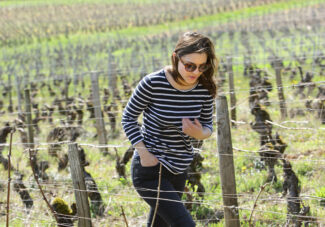
Juliette Joblot, Domaine Joblot
In the cellar, 90% of the Pinot Noir is de-stemmed, and long, cool macerations are encouraged. The Chardonnay from the ‘En Vau’ lieu-dit vineyard as well as the fruit that contributes to the cuvée ‘Mademoiselle’ is pressed slowly to preserve freshness and to avoid off-flavors that may result from aggressive handling. Each parcel is vinified separately and each cuvée undergoes natural fermentation in an identical manner so that the character of the individual terroirs come through.
Although the wines drink well on release, they have a track record for aging 20-25 years in good vintages, meaning that the following wine is an ideal cross-section of what a mature Joblot red represents.
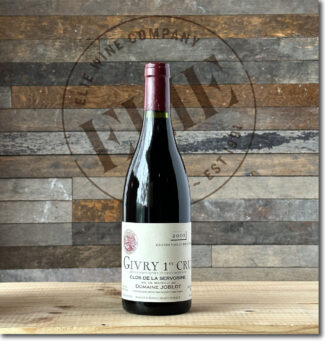 Domaine Joblot, 2003 Givry Premier Cru Clos de la Servoisine ($98)
Domaine Joblot, 2003 Givry Premier Cru Clos de la Servoisine ($98)
Twenty years into it, the excellent 2003 vintage has grown up. In its youth, Servoisine red wines from 2003 displayed plenty of energy, refreshing acidity, plumpish body and a good quality of ripe and silky tannin. Today, these sunny wines are no less lovely and are certainly more complex; as the fruit recedes, the bones of earth begin to poke through, although the purity and precision remains. The acidity is more apparent and the style is both mellow and brisk with a touch of austerity manifested as cool minerality and edge.
Bottle Size Matters: When Aging Wine, The Bigger, The Better
When making a wine purchase for immediate serving, the primary information you’re after may be the number of glasses in a given bottle. For a standard bottle, you’ll get about five five-ounce glasses of wine, while a magnum—1.5L or 50 ounces will fill 10 glasses. Logically, a half-bottle equals 2.5 five-ounce pours. But there is more to consider when you buy a wine that you intend to leave in bottle to mature, since format has an effect on a wine’s ability to age. This is the result of oxygen exchange relative to the amount of wine in the bottle. A magnum has about the same ullage (the space between the top of the liquid and the bottom of the cork) as a standard 750ml bottle. However, it has twice the volume of wine, so the ratio of wine to oxygen is significantly impacted and, by extension, so is the aging potential of the wine and the speed at which it occurs.
The following wines from this week’s selection are also available in magnums.
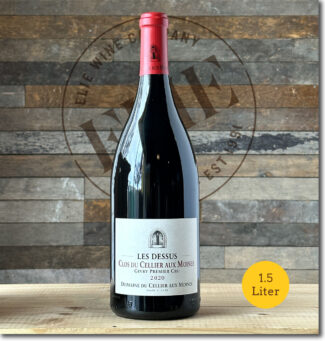
2020 Domaine du Cellier aux Moines, Givry Premier Cru Clos du Cellier ‘Les Dessus’ ($360) 1.5 Liter
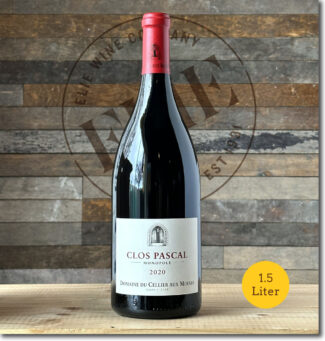
2020 Domaine du Cellier aux Moines, Givry Clos Pascal ‘Monopole’ ($600) 1.5 Liter
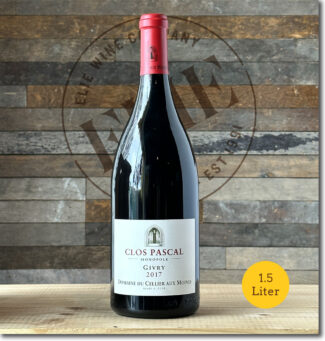
2017 Domaine du Cellier aux Moines, Givry Clos Pascal ‘Monopole’ ($450) 1.5 Liter
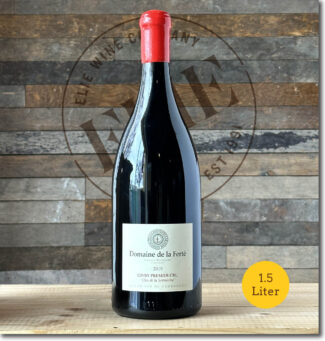
2019 Domaine de la Ferté, Givry Premier Cru Clos de la Servoisine ($140) 1.5 Liter
- - -
Posted on 2023.05.06 in Givry, Saturday Sips Wines, France, Burgundy
Featured Wines
- Notebook: A’Boudt Town
- Saturday Sips Wines
- Saturday Sips Review Club
- The Champagne Society
- Wine-Aid Packages
Wine Regions
Grape Varieties
Albarino, Albarín Blanco, Albarín Tinto, Albillo, Aleatico, Aligote, Arbanne, Aubun, Barbarossa, barbera, Biancu Gentile, bourboulenc, Cabernet Franc, Caino, Caladoc, Calvi, Carcajolu-Neru, Carignan, Chablis, Chardonnay, Chasselas, Cinsault, Clairette, Corvina, Counoise, Dolcetto, Erbamat, Ferrol, Frappato, Friulano, Fromenteau, Gamay, Garnacha, Garnacha Tintorera, Gewurztraminer, Graciano, Grenache, Grenache Blanc, Groppello, Juan Garcia, Lambrusco, Loureira, Macabeo, Macabou, Malbec, Malvasia, Malvasia Nera, Marcelan, Marsanne, Marselan, Marzemino, Mondeuse, Montanaccia, Montònega, Morescola, Morescono, Moscatell, Muscat, Natural, Niellucciu, Parellada, Patrimonio, Pedro Ximénez, Petit Meslier, Petit Verdot, Pineau d'Aunis, Pinot Blanc, Pinot Gris, Pinot Meunier, Pinot Noir, Pouilly Fuisse, Pouilly Loche, Poulsard, Prieto Picudo, Riesling, Rondinella, Rose, Rousanne, Roussanne, Sagrantino, Sauvignon Blanc, Savignin, Sciacarellu, Semillon, Souson, Sparkling, Sumoll, Sylvaner, Syrah, Tannat, Tempranillo, Trebbiano, Trebbiano Valtenesi, Treixadura, Trousseau, Ugni Blanc, vaccarèse, Verdicchio, Vermentino, Xarel-loWines & Events by Date
- July 2024
- June 2024
- May 2024
- April 2024
- March 2024
- February 2024
- January 2024
- December 2023
- November 2023
- October 2023
- September 2023
- August 2023
- July 2023
- June 2023
- May 2023
- April 2023
- March 2023
- February 2023
- January 2023
- December 2022
- November 2022
- October 2022
- September 2022
- August 2022
- July 2022
- June 2022
- May 2022
- April 2022
- March 2022
- February 2022
- January 2022
- December 2021
- November 2021
- October 2021
- September 2021
- August 2021
- July 2021
- June 2021
- May 2021
- April 2021
- March 2021
- February 2021
- January 2021
- December 2020
- November 2020
- October 2020
- September 2020
- August 2020
- July 2020
- June 2020
- May 2020
- April 2020
- March 2020
- February 2020
- January 2020
- December 2019
- November 2019
- October 2019
- September 2019
- August 2019
- July 2019
- June 2019
- May 2019
- April 2019
- March 2019
- February 2019
- January 2019
- December 2018
- November 2018
- October 2018
- September 2018
- August 2018
- July 2018
- June 2018
- May 2018
- April 2018
- March 2018
- February 2018
- January 2018
- December 2017
- November 2017
- October 2017
- September 2017
- August 2017
- July 2017
- June 2017
- May 2017
- April 2017
- March 2017
- February 2017
- January 2017
- December 2016
- November 2016
- October 2016
- September 2016
- August 2016
- July 2016
- June 2016
- May 2016
- April 2016
- March 2016
- February 2016
- January 2016
- December 2015
- November 2015
- October 2015
- September 2015
- August 2015
- July 2015
- June 2015
- May 2015
- April 2015
- March 2015
- February 2015
- January 2015
- December 2014
- November 2014
- October 2014
- September 2014
- August 2014
- July 2014
- June 2014
- April 2014
- March 2014
- February 2014
- January 2014
- December 2013
- November 2013
- October 2013
- September 2013
- August 2013
- July 2013
- June 2013
- May 2013
- April 2013
- March 2013
- February 2013
- January 2013
- December 2012
- November 2012
- October 2012
Search



